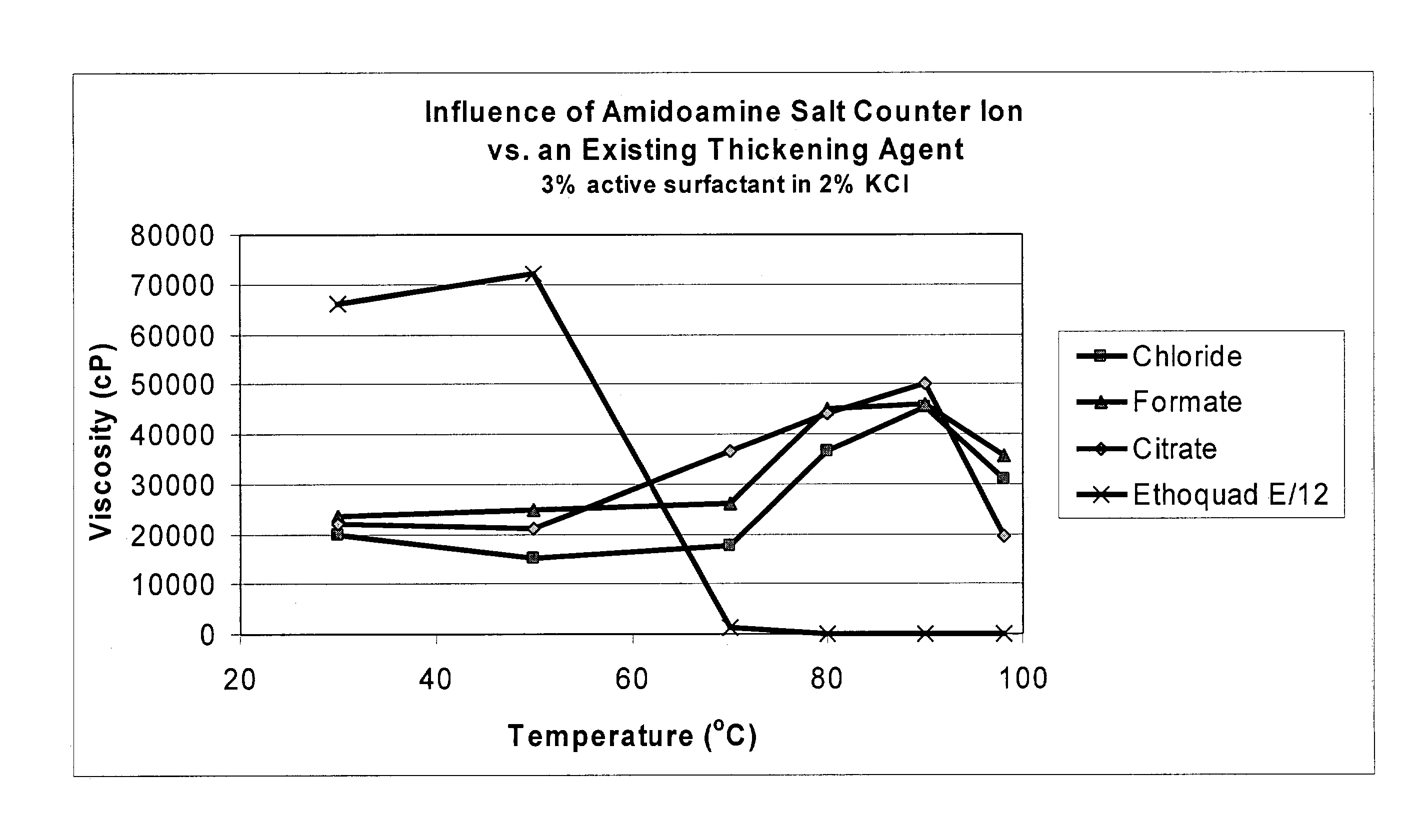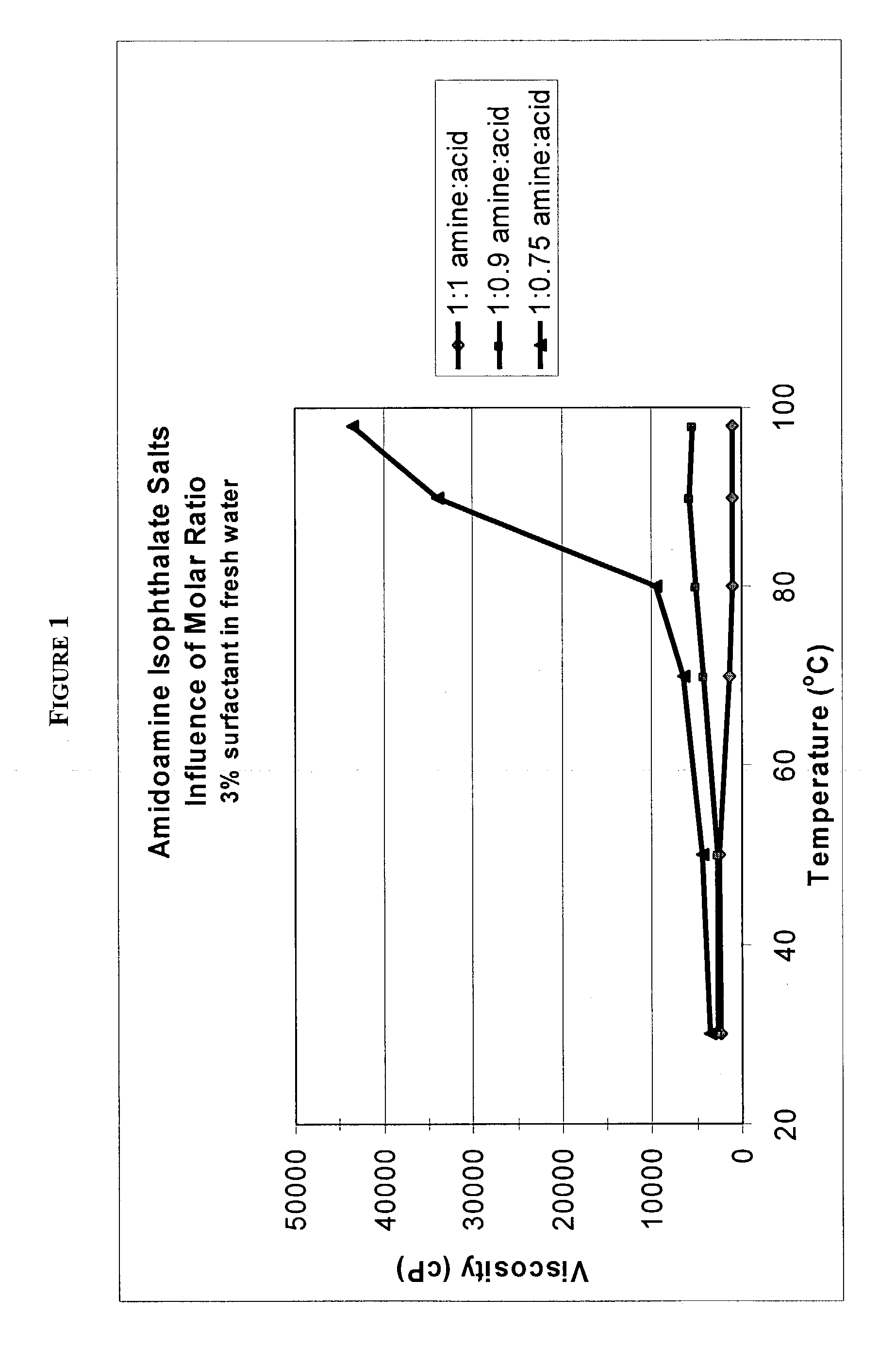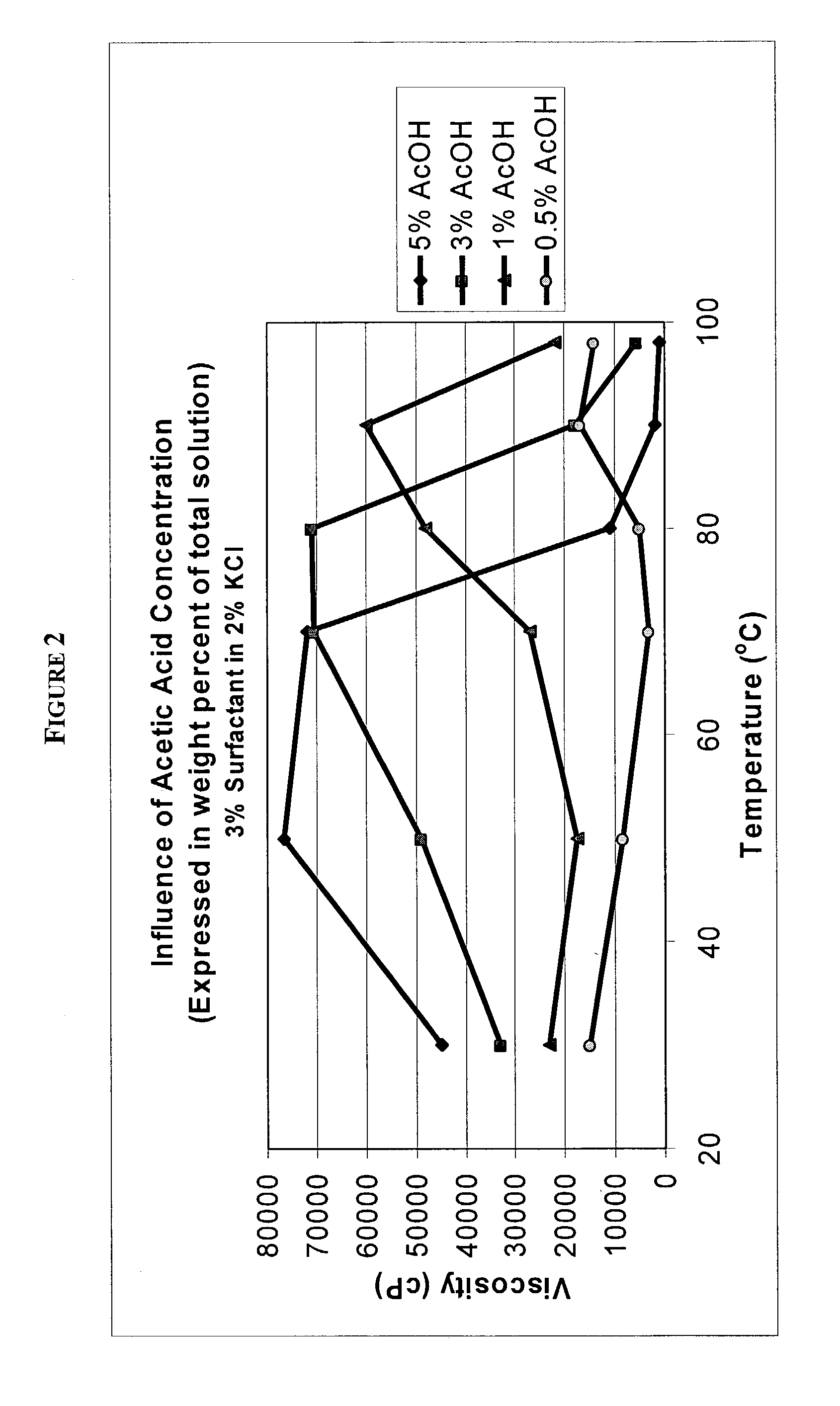Amidoamine salt-based viscosifying agents and methods of use
a technology of viscosifying agent and amidoamine salt, which is applied in the direction of colloidal chemistry, sealing/packing, and well accessories, etc., can solve the problems of chemical breaker, such as peroxide, and the viscosity of fluids thickened with polymer-based materials, and achieve the effect of reducing the number of fracturing fluids, and reducing the number of fracturing
- Summary
- Abstract
- Description
- Claims
- Application Information
AI Technical Summary
Benefits of technology
Problems solved by technology
Method used
Image
Examples
example 1
[0074]Five viscoelastic fluid formulations were prepared to demonstrate viscoelastic fluid efficacy in a brine-based aqueous media. Such brines are typical of those which may be encountered in oilfield applications. Such brine or salt-based aqueous media may also be found in consumer product fluids, for example toilet bowl cleaners, drain openers, shampoos and body washes.
[0075]An aqueous medium was prepared by admixing 0.17 g formic acid (90%) with 48 g deionized water and 0.5 g of an optional salt component. The salt component in each of the five fluids is identified in Table 1. After dissolution, each aqueous medium was heated to 60° C. and 1.35 g of molten erucylamidopropyldimethylamine was added to yield an erucylamidopropyldimethylammonium formate salt surfactant in situ. The resultant viscoelastic fluid contained 1% by weight of the salt component and 3% by weight of the amidoamine salt surfactant component. 0.6% by weight Tomah Products Alkali Surfactant was added to the sod...
example 2
[0079]Three viscoelastic fluid formulations containing 3% by weight of erucylamidopropyldimethylammonium chloride salt surfactant were prepared. As noted in Table 2, the aqueous media consisted of fresh water or brines comprising 1% or 2% potassium chloride.
[0080]To 47.25 g deionized water was added 0.35 g HCl (37%) and 1.0 g KCl. After dissolution, 1.4 g molten erucylamidopropyldimethylamine was added. The mixture was agitated and stored at 65° C. for 2–3 hours. The resultant clear, homogeneous fluid was then cooled. Samples containing only fresh water (i.e., 0% KCl) and 1% KCl were made in a similar fashion.
[0081]Each of the three specimen compositions was heated to 98° C. and viscosity measurements were taken at each of the temperatures noted in Table 2.
[0082]
TABLE 2Temp ° C.Viscosity (cP)(° F.)Fresh Water1.0% KCl2.0% KCl30 (86)1800320002000050 (122)5700295001500070 (158)3500235001750080 (176) 300310003650090 (194) 25335004550098 (208)Not measured3250031000
[0083]Example 2 shows t...
example 3
[0084]Four viscoelastic fluid samples were prepared, each comprising 3% by weight of erucylamidopropyldimethylammonium isophthalate. The molar ratios of the amidoamine surfactant and acid components were varied from a ratio of 1:1 to 1.0:0.75.
[0085]The 1:0.75 fresh water sample was prepared in the following manner (the 1:1 and 1:0.90 samples were made in a similar fashion): 48.5 g deionized water was added to 0.26 g isophthalic acid. The mixture was heated to 70° C. and 1.23 g molten erucylamidopropyldimethylamine was added to obtain a clear, thickened fluid. The 1:0.75 1% KCl sample was formulated according to the same protocol except that 0.5 g KCl was added to 47.5 g deionized water and 0.5 g of Alkali Surfactant co-surfactant was added to the aqueous medium following stirring of the viscoelastic fluid for 5–10 minutes at 70° C.
[0086]Subsequently, each viscoelastic fluid sample was heated from 30 to 98° C. while viscosity measurements were taken at each temperature noted in Table...
PUM
| Property | Measurement | Unit |
|---|---|---|
| viscosity | aaaaa | aaaaa |
| temperature | aaaaa | aaaaa |
| temperature | aaaaa | aaaaa |
Abstract
Description
Claims
Application Information
 Login to View More
Login to View More - R&D
- Intellectual Property
- Life Sciences
- Materials
- Tech Scout
- Unparalleled Data Quality
- Higher Quality Content
- 60% Fewer Hallucinations
Browse by: Latest US Patents, China's latest patents, Technical Efficacy Thesaurus, Application Domain, Technology Topic, Popular Technical Reports.
© 2025 PatSnap. All rights reserved.Legal|Privacy policy|Modern Slavery Act Transparency Statement|Sitemap|About US| Contact US: help@patsnap.com



